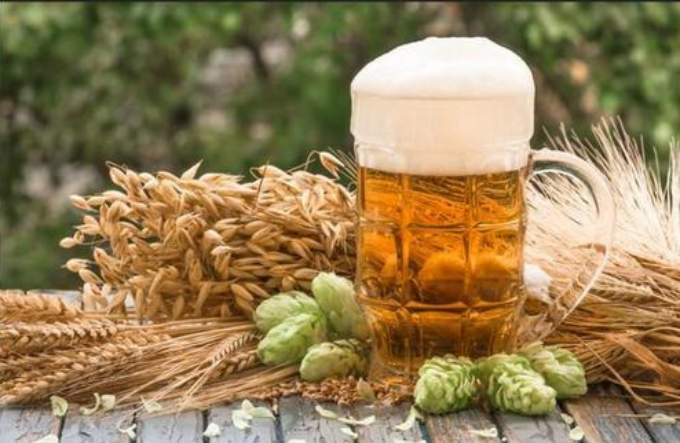
Hops are an indispensable and most important additive in beer brewing. It has the following functions:
(1) Give beer a refreshing bitterness and pleasant aroma.
(2) Increase the antiseptic ability of wort and beer.
(3) Increase the foam retention of beer.
(4) hops and wort are boiled together, which can promote protein coagulation, help the clarification of wort, and help the abiotic stability of beer.
The most important components of hops in beer brewing are hop resin, hop oil and polyphenols, which give beer its unique bitter taste and aroma. In addition, hop resin also has antiseptic ability, and polyphenols have the effect of clarifying wort and full-bodied wine.
1.1 Hop resin
Hop resin can be divided into hard resin and soft resin, and soft resin is composed of α-acid, β-acid and uncharacterized resin.
(1) α - acids. α - acid is the general term for humulone and its congeners compound humulone, plus humulone, pre-humulone and post-humulone. Alpha acid is the main component of bitterness in beer. It has strong bitterness and strong antiseptic ability, and can increase the foam stability of beer.
A. α-acid is diamond-shaped product, light yellow, soluble in ether, ethane, methanol and other organic solvents.
B. The content of α-acid fluctuates greatly due to different varieties, origins, years, harvest time and processing methods. Fresh hops contain 5% - 10% α-acid, and dry hops α-acid content generally fluctuates in the range of 3% - 15%, and the α-acid content of newly cultivated varieties is constantly increasing, and can reach more than 15%. Among the five homologues of α-acid, the content ratio of gluconate was 15% - 20%, which was relatively stable. The ratio of humulone and synhumulone varies greatly with varieties. Generally speaking, the chrysone content of aroma hops is relatively low, while the content of bitter hops is relatively high, which is typical and is also one of the methods to identify bitter and aroma hops. Prehumulone and posthumulone were only present in trace amounts.
C. The solubility of α-acid in water is very small, slightly soluble in boiling water, and its solubility varies greatly with the pH value. The higher the pH value, the higher the solubility. For example, when the pH of wort is 5.2, the solubility is only 85mg/L; when the pH is 6.0, the solubility is as high as 500mg/L.
D. α-acid is easily converted into iso-a acid during the wort boiling process, and the isomerization rate is 40% to 60%. Iso-alpha acid is yellow and oily. Like alpha acid, it has the functions of bitterness, antiseptic ability and improving foam stability. Its solubility in wort is much higher than that of alpha-acid. The bitterness of beer mainly comes from iso-alpha acid.
E. The α-acid content of hops is unstable. When the packaging or storage conditions are not good, it is very easy to oxidize and polymerize, changing from soft resin to hard resin, and then losing its unique taste and antiseptic ability. When hops and wort azeotrope for too long, α-acids may be converted into non-bitter humulic acid or other abnormally bitter derivatives.
F. α-acid can react with lead acetate solution to form light yellow α-acid lead salt precipitate, which can be determined by conductometric titration. However, the specificity of this method is not very strong, because other components in hops are also easily precipitated by lead salts, such as α-acid oxides.
(2) β-acid. Fresh hops contain 11% beta-acids, dry hops generally have 3% - 6%. β-acid is a white needle-like or rhomboid crystal, which is difficult to dissolve in water. Its bitterness, antiseptic ability and acidity are weaker than α-acid, and its stability in air is also smaller than that of α-acid. It is easy to oxidize into bitter taste. Soft resin. The bitter substance in beer, β-acid only accounts for about 15%. β-acid cannot react with lead acetate to form insoluble lead salt, so this property can be used to separate a-acid and β-acid.
(3) Soft resin and hard resin. Fresh and ripe hops contain mainly α-acids and β-acids. During the drying and storage of hops, the alpha- and beta-acids are continuously oxidized to become soft resins, which in turn oxidize to hard resins, which are of no value in beer brewing. If the content of hard resin exceeds 20% of the total amount of hop resin, it is regarded as aged hops, and its use value is reduced or cannot be used.
1.2 Hop oil
Hop oil is another secretion other than hop resin secreted by the hop glands of hops. It is mainly formed after the hops are mature and most of the hop resin has been synthesized. The content and composition of hop oil mainly depends on the hop variety. Of course, it also has a certain relationship with planting conditions, climate and soil, hop maturity and hop processing methods.
(1) Composition of hop oil. Hops contain 0.5% - 2% hop oil. The composition of hop oil is very complex, and more than 200 species have been detected, of which 75% are terpene hydrocarbons and 25% are oxygen-containing compounds. The main constituents of terpene hydrocarbons are monomeric terpenes (e.g. myrcene, α and β pinene) and sesquiterpenes (e.g. humulene, β caryophyllene, β farnesene); Ingredients include esters (such as methyl 4 - caprate, isobutyl isobutyrate, 2-methyl - butyl isobutyrate), acids (such as caproic acid and methylheptanoic acid, etc.), alcohols (such as linalool, geraniol, etc.), aldehydes (such as isobutyraldehyde, isovaleraldehyde, etc.) and ketones (such as humuladienone and other methyl ketones, etc.).
The main active ingredient in hop oil is myrcene hydrocarbon, but it is very volatile and can volatilize even at room temperature. More than 90% of wort is volatilized during boiling, cooling and fermentation, and only 8% - 9% is dissolved in beer. The longer the wort is boiled, the greater the loss. For this reason, the method of adding hops in stages is often used, the purpose is to retain an appropriate amount of hop oil to highlight the hop aroma of beer. In response to the volatile characteristics of the above-mentioned hop oil, people have developed hop oil products, which can replace the scented hops and directly add them to the boiling pot, the gyratory sedimentation tank or even the fermented liquid, which can increase the aroma of beer.
(2) The nature and function of hop oil
A. Hop oil is yellow-green to brown liquid, volatile, soluble in ether, ester and concentrated ethanol.
B. Hop oil is not easily soluble in water and wort, and most of the hop oil will be separated during the boiling of wort and the separation of hot and cold solids.
C. Hop oil is easily oxidized, and certain components of its terpene hydrocarbons are easily oxidized into corresponding epoxides and alcohols. Some of these conversion substances are believed to be the main source of hop aroma.
D. Hop oil has always been considered as the main source of hop aroma, but the traditional hops with good aroma have a lower content of hop oil, which shows that the hop aroma of beer is mainly determined by the composition of hop oil, not in other components How much content. For example, the main components of hop oil, myrcene and dimethyl butyl isobutyrate, have a negative effect on the aroma of hops, and the content of these two components in hops with good aroma is lower than that in bitter hops. Bitter hops contain less 2-decanone and linalool than aroma hops.
E. The aroma of hop oil gradually disappears due to resinization and polymerization during storage. At the same time, some esters formed by terpene alcohols and fatty acids in hop oil are hydrolyzed during storage to release fatty acids (such as isovaleric acid), which makes hops produce a cheese odor. These odors are easily evaporated.
F. The ratio of oxalone to myrcene in fragrant hops is generally greater than that in bitter hops, which is also a way to distinguish bitter and fragrant hops.
1.3 Polyphenols
Hops contain 4% - 10% polyphenols. Its main components are anthocyanins, tannins and catechins, etc. It is a non-crystalline mixture, and it is also the main component that affects the flavor of beer and causes beer turbidity, and is increasingly valued. Low-molecular-weight polyphenols are beneficial to the body of beer, and can give beer a certain mellowness; oxidized high-molecular-weight polyphenols will cause the beer flavor to be harsh and rough, and deepen the color. Polyphenols are both reductive and oxidative. On the one hand, they can prevent some substances in beer from being oxidized. On the other hand, in the oxidized state, they can catalyze fatty acids and higher alcohols to form aldehydes, which directly or indirectly promote Beer tastes aged.
When the wort is boiled, polyphenols can precipitate protein, which can clarify the wort, help the beer taste full and improve the quality of bitterness. However, this precipitation will continue in the beer after the wort is cooled, fermented, and even filtered and bottled, resulting in beer turbidity and affecting the stability of the beer.
Therefore, hop polyphenols have both beneficial and adverse effects on beer, which need to be reasonably controlled during the production process.
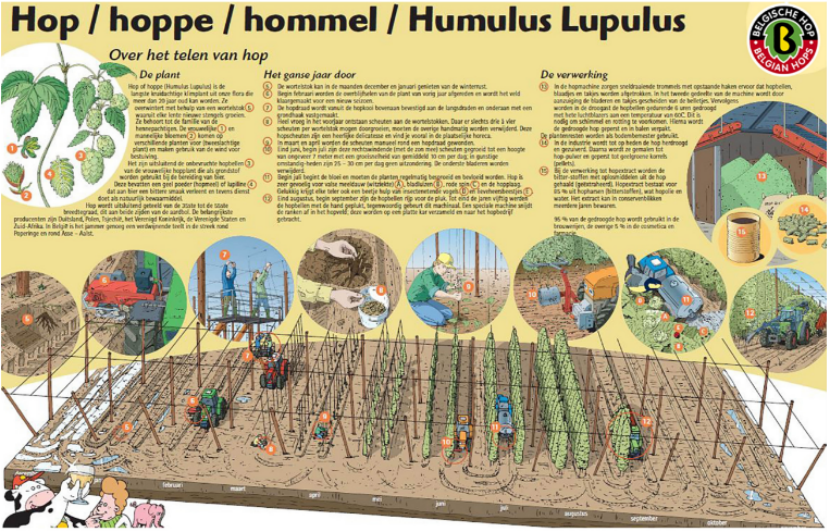
The traditional way of adding hops is to use whole hops, but this method is not very economical, and the utilization rate of active ingredients of hops is only about 30%. In order to improve the utilization rate of hops and facilitate transportation and storage, many hop products have been developed. In 1908, Britain used hop extract to produce beer for the first time; in 1925, Mr. Kolbacb, a German, reported the patent of hop extract; around 1960, a large number of various hop products came out.
2.1 Advantages of hop products
(1) Small size, convenient storage and transportation, and greatly reduced costs.
(2) The utilization rate of active ingredients in hops is greatly improved, that is, the yield of bitter substances is high.
(3) Hop products can be stored almost indefinitely. Therefore, enterprises can store hop products in good hop harvest years without being affected by sharp fluctuations in hop market prices.
(4) Using hop products, no need to use a hop separator, just use a whirlpool sedimentation tank for separation, which simplifies the saccharification process.
(5) Hop products can accurately control the bitterness content, so the addition can realize automatic metering.
2.2 Types of hop products
At present, there are three types of the most common hop products: granular hops, hop extract, and hop oil.
2.2.1 Granular hops
Granular hops have become the most widely used hop product in the world, and its output has accounted for more than 50% of the total hop production. The largest producing and using countries are Germany and the United States.
Granular hops are made by crushing whole hops into hop powder, then pressing them into short rod-shaped particles with a diameter of 2-8mm and a length of about 15mm, and then vacuumizing or filling them with nitrogen, carbon dioxide and other inert gases for packaging.
According to different processing methods, granular hops can be divided into 90 type, 75 type, 45 type granular hops and isomerized granular hops.
(1) Type 90 granular hops (ordinary granular hops). The 90-type granular hops are only 90% of the original weight of the hops due to the reduction of some water and stalk leaves and other sundries. Generally packed in aluminum foil, 5kg or 10kg per bag. The amount of α - acid contained in this granular hop is determined by the hop variety used. During processing, the loss of α-acid is small.
(2) Type 45 granular hops (concentrated granular hops). The hop weight of type 45 pellets is only 45% of the original weight of hops, and the content of α-acid and hop oil is higher than that of type 90, and the content of α-acid can be as high as 20%. The loss of α - acid in the process is large, so the cost is high, the price is expensive, and more complicated equipment is required.
(3) Pre-isomerized pelleted hops. This granular hop system pre-isomerizes alpha-acids and then makes them into pellets. That is to say, the above-mentioned stable granular hops added with Mg(OH) 2 are heated anaerobically at no more than 80°C, and the α-acid magnesium salt can be easily converted into iso-a-acid magnesium salt within 2 hours . Its conversion rate can reach more than 90%, but it has little effect on other components of hops. The loss of hop oil is about 10%, and the loss of β-acid is 5%~10%. Pre-isomerized alpha-acid magnesium salts can increase alpha-acid utilization by up to 60%.
2.2.2 Hops extract
Hop extract is a viscous paste-like liquid extracted from liquid, supercritical carbon dioxide or water as a medium, and granular hops as raw materials. The common hop extract varieties are: carbon dioxide hop extract, isomerized hop extract, (dihydro) reduced isomerized hop extract, tetrahydro-reduced isomerized hop extract, hexahydro-reduced isomerized hop extract, etc.
It should be noted that: because the hop extract does not contain tannin and other substances, it should not be used alone. It must be used in combination with granular hops to achieve the ideal protein aggregation and precipitation effect.
(1) Carbon dioxide hop extract
Carbon dioxide hop extract is extracted from granular hops and liquid or supercritical carbon dioxide as a medium. Carbon dioxide hop extract contains most of the ingredients in the hops, which is more stable than the original flower and granular hops, and can bring the desired bitterness and aroma components to the beer. Its utilization rate is 20% higher than that of the original flower, which is not much different from that of granular hops.
The preparation process is: re-crushing the granular hops, using liquid carbon dioxide at 10°C-12°C, 5.5-6.0MPa
Extract under the conditions, and then recover the extract at 15°C to 20°C; or use supercritical carbon dioxide to extract at 50°C and 30MPa, and then recover the extract at a higher temperature. Since liquid carbon dioxide is a selective solvent, it does not collect hard resin, tannin, fat, paraffin, and plant pigments, so its hop oil content is the closest to that of the original flower, which is also commonly referred to as hop extract; Extraction takes place at higher temperatures, so some hop oil is lost.
(2) Heterogeneous hop extract
Isomeric hop extract is a standardized aqueous solution of pure isomeric a-acid extracted from carbon dioxide hop extract as raw material and only in water as a medium. It is a natural picric acid that can be found in beer brewed from traditional hop products. Its standard content is 30% (weight/volume). Iso-hop extract has a full-bodied, round, mild bitterness and is the benchmark for the relative bitterness intensity of other iso- and reduced-hop preparations. Its relative bitterness intensity is: 1.0 mg/L=1.0 mouthfeel bitterness unit.
(3) (dihydro) reduction isomerism hop extract
(Dihydro) reduction isomerism hop extract is a standardized aqueous solution of pure reduction isomerization a-acid extracted from carbon dioxide hop extract as raw material and only using water as the medium. This product can make white bottle beer or green bottle beer with light resistance Whether used alone or mixed with other hop products, it can give beer a soft, smooth bitterness. Its standard content is 35% (weight/volume).
(4) Tetrahydroisomeric hop extract
Tetrahydroisomerized hop extract is a standardized aqueous solution of pure tetrahydroisomeric a-acid extracted from carbon dioxide hop extract as raw material and only in water. This product can improve the stability of beer foam and the performance of hanging cups. Makes white beer lightfast and imparts a refreshing bitterness to beer, whether used alone or in combination with other hop products. Its standard content is 10% (weight/volume).
(5) Hexahydroisomeric hop extract
Hexahydroisomeric hop extract is a mixed aqueous solution of tetrahydroisomeric a-acid and hexahydroisomeric a-acid extracted from carbon dioxide hop extract as raw material and only in water. This product can improve the stability of beer foam The white bottle beer has light fastness due to its excellent performance and hanging cup performance, and its bitterness is between tetrahydroisomeric hop extract and heterogeneous hop extract, which can endow the beer with pure and refreshing bitter taste. Its standard content is 15% tetrahydroisomeric hop extract and 15% hexahydroisomeric hop extract (weight/volume).
2.2.3 Hop oil
(1) Scented hop oil
Aroma hop oil is composed of β-acid and hop oil components separated from carbon dioxide hop extract with high a-acid content, and contains all the aroma of hops without bitter substances. Due to the deep processing, nearly all of the a-acids have been removed. This product is mainly used to provide fresh hop aroma to light-fast beer, which can completely replace the aroma added during wort boiling. Its standard content is 10% to 15% (weight/volume).
(2) β-hop oil
β-hop oil is composed of β-acid and hop oil components isolated from carbon dioxide hop extract with high a-acid content, but also contains a small amount of a-acid (usually 0.3%~1.5%). Therefore, it is not recommended to use this product to brew light-fast beer. Its standard content is 8%~12% (weight/volume).
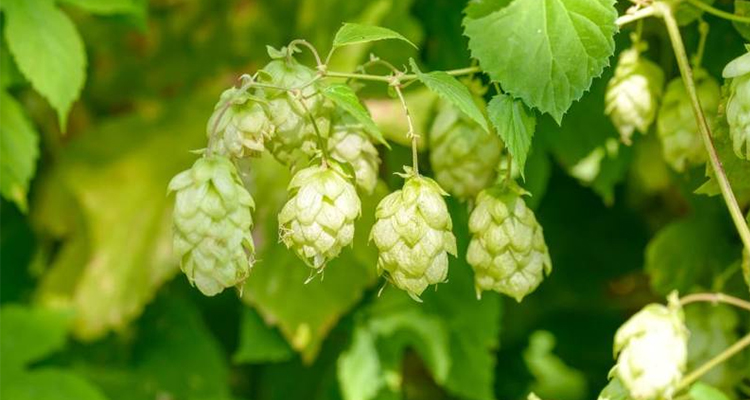
Only under certain storage conditions can hops keep their active ingredients unchanged for a certain storage time. Many environmental factors such as microbial attack, the effect of oxygen in the air, and higher temperature and humidity can accelerate the deterioration and oxidation of hops. In addition, light is also harmful to the storage of hops, which can make the color of hops white. Therefore, only by storing hops in a low-temperature, oxygen-proof, light-proof and dry environment can they maintain their color, fragrance and a-acid content for a long time.
To sum up, the storage of hops should pay attention to the following points:
(1) The hops should be tightly packaged, and pressing is important. Vacuumize to remove air, and if necessary, fill the packaging container with nitrogen or carbon dioxide for isolation.
(2) Hops should be stored at 0°C~2°C; hop bags should be placed on wooden grids.
(3) The hop warehouse should be dry, and the relative humidity should be below 60%; the indoor light should be dark to avoid discoloration of the hops; and other odorous items cannot be placed in the warehouse.
(4) The stored hops should be first in first out to prevent backlog.
In addition, it can be seen from the third section that storage in the form of hop products (granule hops, hop extract, hop oil) is the best way to maintain the value of hop brewing, and the specific storage methods have been involved.
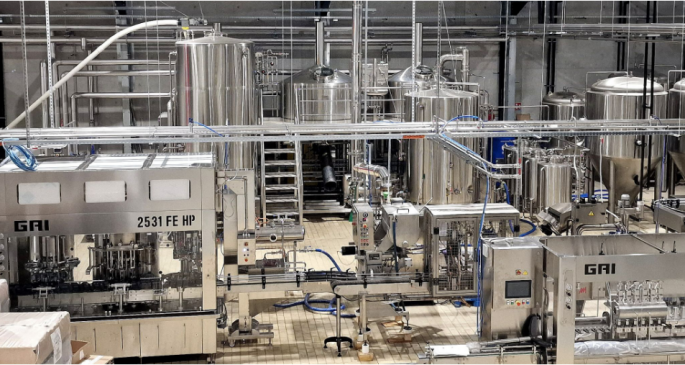
Shandong Zeren Machinery Equipment Co., Ltd. is an equipment manufacturer focusing on biological fermentation industry
Copyright © Shandong Zeren Machinery Equipment Co., Ltd. All Rights Reserved |
Sitemap
| Technical Support:

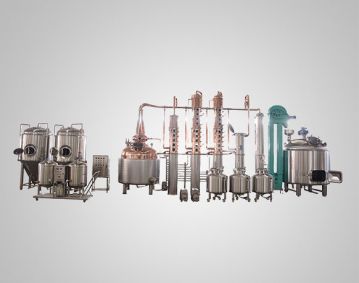 1500L Vodka Distiller
1500L Vodka Distiller
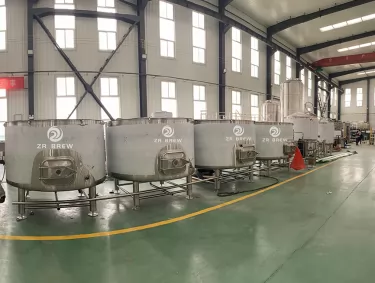 Kambucha Brewing Equipment
Kambucha Brewing Equipment
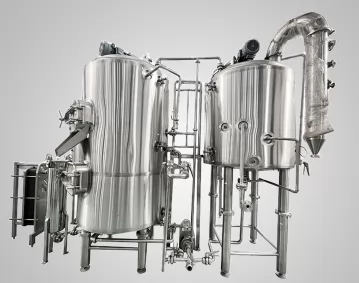 500L Nano Brewing Equipment
500L Nano Brewing Equipment
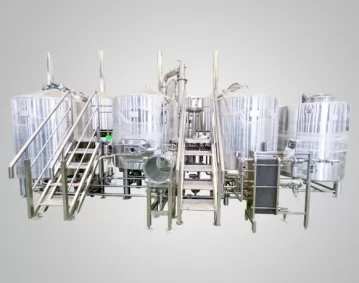 1000l 4 vessels beer brewing equipment system
1000l 4 vessels beer brewing equipment system
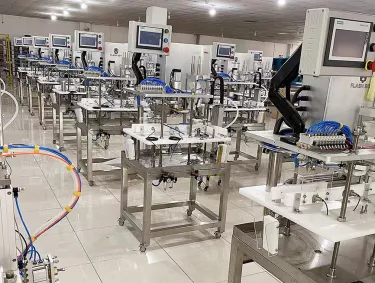 Semi-auto Can Washing & Filling & Capping Machine
Semi-auto Can Washing & Filling & Capping Machine
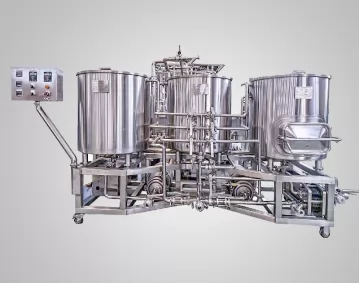 150L home brewery
150L home brewery
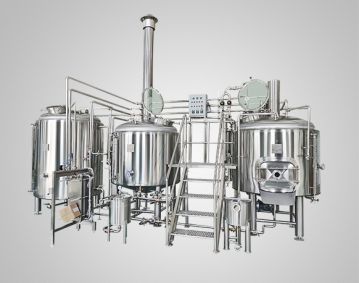 1000L brewery equipment
1000L brewery equipment
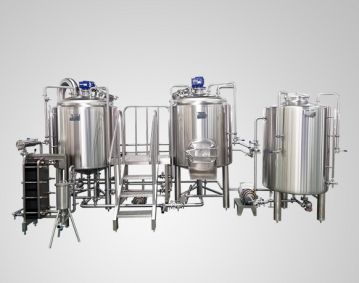 500L Brewery Equipment
500L Brewery Equipment
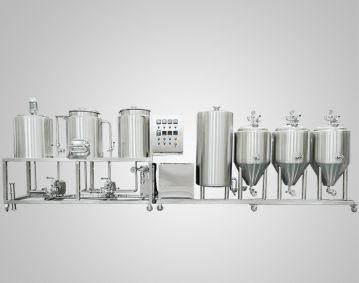 150L home brewing equipment
150L home brewing equipment
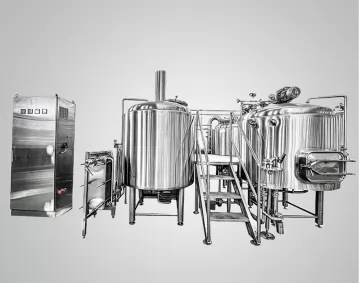 1500L 4 Vessle Brewery Equipment
1500L 4 Vessle Brewery Equipment
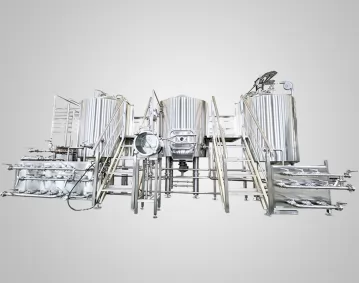 1000L Brewery Equipment
1000L Brewery Equipment
 50L small brewery
50L small brewery
 100L home brewery
100L home brewery
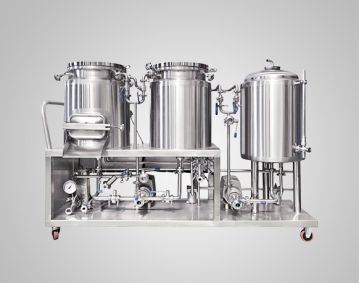 100L home brewing equipment
100L home brewing equipment
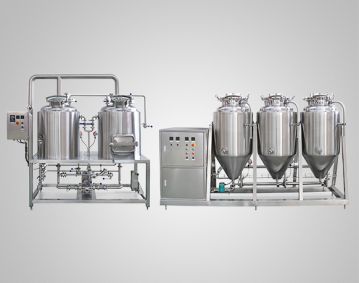 60L home brewing equipment
60L home brewing equipment
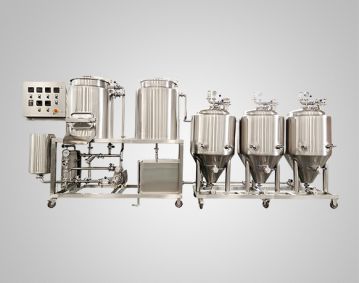 50L/100L home brewing equipment
50L/100L home brewing equipment
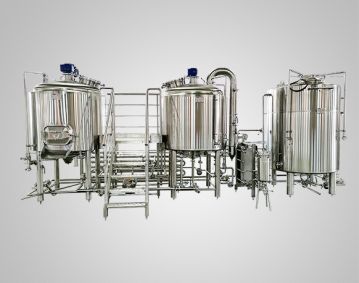 800L Brewery Equipment
800L Brewery Equipment
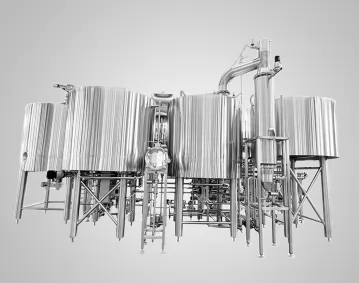 2500L Turnkey Brewery
2500L Turnkey Brewery
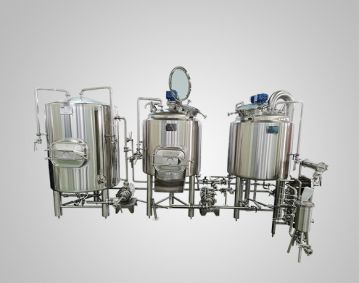 300L brewery equipment
300L brewery equipment
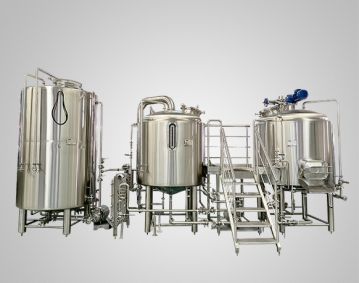 1000L brewery equipment
1000L brewery equipment
 50L home brewing equipment
50L home brewing equipment
